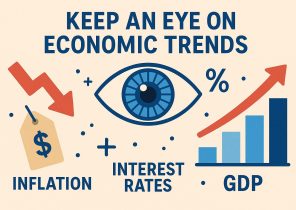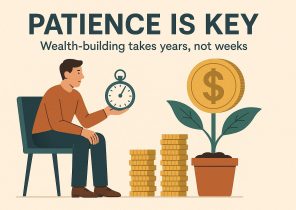Introduction
In the ever-evolving world of investment, the common tendency to follow the crowd can often lead investors astray. Many beginner or novice investors, driven by popular investment trends and the actions of others, dive headlong into these trends without conducting thorough research or due diligence. While this may seem a convenient and potentially rewarding approach, the importance of charting a unique course cannot be overstated. By carving out a personalized path, investors can make more informed financial decisions that are less reliant on the volatile and sometimes fickle nature of the market.
The Influence of Market Trends
Market trends exert a significant influence over the investment landscape, often sparking large groups of investors to move in similar directions. This collective movement, a phenomenon popularly known as “herd behavior,” can lead to dramatic surges or slumps in asset prices, contingent on the prevailing market sentiment. Consider the tech bubble of the late 1990s as a pertinent example. Fueled by the enthusiastic promise of internet stocks, vast numbers of investors were drawn in, creating a market primed for eventual collapse. Despite the initial soaring prices and the allure of substantial returns, the bubble burst and left those unprepared facing substantial losses.
Risks of Following the Herd
The decision to follow the herd within the realm of investments poses several inherent risks:
Overvaluation: One primary risk is the overvaluation of assets. When a significant influx of investors directs their resources towards the same asset, it often becomes overvalued. This inflated pricing can lead to considerable potential losses once the market undergoes a correction, as prices realign with the asset’s true value. Investors who entered the market late during the boom period might find themselves holding overpriced and depreciating assets.
Inadequate Analysis: The inclination to chase trends may lead to lax due diligence and the omission of comprehensive fundamental analysis. Investors transfixed by current trends may gloss over a company’s financial health or overlook critical metrics. Consequently, decisions are based more on speculation and less on solid financial data, increasing the likelihood of investments turning sour when the company’s actual performance fails to meet market expectations.
Panic Selling: A herd mentality may incite panic during market downturns, as investors become swayed by the actions of their peers. This often leads to impulsive decision-making, prompting them to sell assets prematurely and at a loss. The collective fear magnifies the downturn, exacerbating losses across the board.
Benefits of Independent Thinking
Adopting an independent investment strategy is beneficial in several ways:
Diversification: Venturing beyond the beaten path allows investors to explore various asset classes and sectors, crafting a diversified portfolio. This diversification serves as a hedge against the risks associated with individual investments and market trends.
Value Investing: By placing emphasis on robust fundamentals rather than fleeting trends, investors can pinpoint undervalued opportunities. Such investments promise more sustainable and potentially lucrative returns over time, as they align more closely with the intrinsic value of the assets.
Long-Term Gains: Independent research encourages long-term planning and the development of a patient mindset. By focusing on enduring fundamentals instead of short-lived market trends, investors often realize gains through patience and strategic timing rather than impulsive reactions to market movements.
How to Cultivate Independent Investment Strategies
Developing a distinct investment strategy necessitates both dedication and continual effort. Here are a few pragmatic steps to consider:
Conduct Thorough Research: Utilizing multiple informative resources is crucial. Platforms such as Investopedia, alongside other financial news outlets, provide comprehensive insights into potential investments. Delving into company reports, historical performance, and expert analyses can furnish a robust foundation upon which to build your investment thesis.
Understand Market Forces: Gaining a grasp of market dynamics is essential. This understanding includes familiarization with economic indicators, industry trends, and geopolitical factors that may influence markets. Comprehending these forces enables investors to anticipate possible market responses and strategize accordingly.
Consult Financial Experts: Seeking guidance from seasoned financial advisors can prove invaluable. These professionals bring a wealth of experience and insights that can help hone your investment strategy, ensuring alignment with your personal financial goals and risk tolerance.
Conclusion
While the allure of moving with the crowd can be strong, especially when faced with the security of numbers and the potential for quick gains, it often does not lead to the most advantageous financial outcomes. Blindly following popular trends without rigorous analysis can steer investors toward significant financial pitfalls. Instead, by committing to independent research and the crafting of personalized financial strategies, investors are better equipped to navigate the complexities of the market landscape. Ultimately, this approach fosters a more secure and potentially profitable investment journey, attuned to the investor’s unique objectives and circumstances. This strategic independence can provide a foundation for financial stability, even amidst the uncertainties inherent in the investment domain.
This article was last updated on: October 9, 2025








